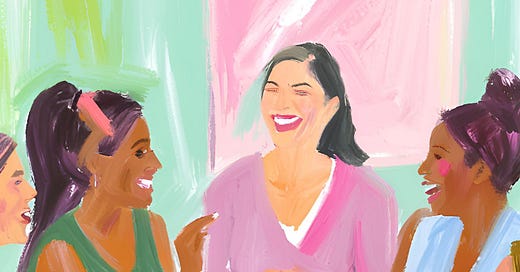From Safe Spaces to Brave Conversations: Nurturing Healthy Dialogue in Chronic Illness Support Groups
How can we balance safety with the courage to engage in meaningful, sometimes difficult conversations?
Imagine joining a support group, hoping for understanding and connection, only to find that certain discussions feel off-limits. Or perhaps you’ve hesitated to share your experience, fearing judgment from those who see things differently. Support groups offer a lifeline for people navigating the complexities of chronic illness. They provide comfort, understanding, and a sense of belonging. But beyond offering a safe space, the most impactful support groups also encourage brave conversations—ones where members feel empowered to share openly, engage with differing perspectives, and grow together in a spirit of mutual respect.
In a world where health advice comes from all directions, from medical professionals to social media influencers, people with chronic illness are often faced with a barrage of differing viewpoints. The ability to critically engage with these perspectives—without shutting down conversation or causing harm—is essential. So how do we create a culture where people feel safe to express themselves while also allowing room for healthy, constructive discussions?
The Difference Between a Safe Space and a Brave Space
A safe space is one where people feel protected from judgement, discrimination, or harm. It’s an essential foundation for any support group. However, true growth happens when we move beyond safety into bravery—where members feel comfortable discussing difficult topics, questioning assumptions, and sharing their evolving beliefs. A brave space doesn’t mean confrontation; it means creating an environment where honest conversations can take place without fear of exclusion or attack.
Fostering Brave Conversations: Key Principles
1. Shift from ‘Right vs Wrong’ to ‘Listening and Learning’
Many health discussions can become polarising. Some swear by conventional medicine, others explore alternative approaches, and still others focus on emotional or spiritual healing. Instead of framing discussions as debates where one approach must win, focus on shared learning.
Ask: What can we learn from each other’s experiences?
Practical takeaway: When responding to a different perspective, try using “I” statements rather than absolutes. Instead of “That doesn’t work,” say, “I had a different experience with that approach.”
2. Encourage Reflection Before Reaction
It’s easy to instinctively reject an idea that contradicts our own experiences. But stepping back and asking, Why do I feel this way? can be a powerful tool for meaningful discussion. Encouraging members to reflect before responding fosters a culture of curiosity rather than defensiveness.
Practical takeaway: Introduce a ‘pause and reflect’ practice in discussions. Before responding to a challenging viewpoint, take a moment to consider what the other person is really trying to express.
3. Set the Tone with Clear Discussion Guidelines
Brave conversations need structure. Without clear guidelines, discussions can easily spiral into defensiveness or conflict. Setting expectations—such as assuming goodwill, avoiding personal attacks, and focusing on lived experiences rather than broad generalisations—ensures that conversations remain productive.
Practical takeaway: At the start of discussions, remind members: “We’re here to share experiences, not to prove a point. Let’s aim to listen as much as we speak.”
4. Make Space for Discomfort—But Not Harm
Discomfort is part of growth. Being exposed to new ideas can challenge long-held beliefs, and that’s okay. However, it’s crucial to distinguish between discomfort (which can be transformative) and harm (which can be distressing or invalidating). Moderators should step in if discussions become dismissive or if misinformation is being spread in a way that could negatively impact someone’s health.
Practical takeaway: If a conversation becomes heated, shift the focus back to shared experiences. For example: “It sounds like you both have different perspectives—what was it in your journey that led you to your view?”
5. Celebrate the Power of Diverse Lived Experiences
The richness of a support group lies in its diversity. No two people experience illness in the same way, and every perspective adds value. Rather than seeking consensus, the goal is to create an environment where multiple truths can coexist.
Practical takeaway: Consider introducing ‘Perspective Spotlights,’ where members take turns sharing how they’ve navigated a particular challenge—without interruption or debate, simply to allow others to understand a different lived experience.
Final Thoughts: A Community Built on Connection, Not Conformity
A thriving support group is not one where everyone agrees—it’s one where everyone feels heard, respected, and valued. By embracing both safety and bravery, support groups can be more than just places of comfort; they can be spaces of transformation, where members grow stronger not in spite of their differences, but because of them.
Creating a truly empowering support group isn’t about erasing disagreements or shielding members from difficult conversations. It’s about equipping each other with the tools to navigate them with compassion, curiosity, and care. Because in the end, the goal isn’t to all think the same way—it’s to walk alongside each other, learning and growing together, no matter where our individual paths may lead.




